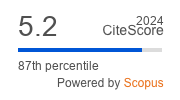Article | Open Access
Media Coverage and Perceived Policy Influence of Environmental Actors: Good Strategy or Pyrrhic Victory?
| Views: | 4485 | | | Downloads: | 2786 |
Abstract: In this article we analyze how media coverage for environmental actors (individual environmental activists and environmental movement organizations) is associated with their perceived policy influence in Canadian climate change policy networks. We conceptualize media coverage as the total number of media mentions an actor received in Canada’s two main national newspapers—the Globe and Mail and National Post. We conceptualize perceived policy influence as the total number of times an actor was nominated by other actors in a policy network as being perceived to be influential in domestic climate change policy making in Canada. Literature from the field of social movements, agenda setting, and policy networks suggests that environmental actors who garner more media coverage should be perceived as more influential in policy networks than actors who garner less coverage. We assess support for this main hypothesis in two ways. First, we analyze how actor attributes (such as the type of actor) are associated with the amount of media coverage an actor receives. Second, we evaluate whether being an environmental actor shapes the association between media coverage and perceived policy influence. We find a negative association between media coverage and perceived policy influence for individual activists, but not for environmental movement organizations. This case raises fundamental theoretical questions about the nature of relations between media and policy spheres, and the efficacy of media for signaling and mobilizing policy influence.
Keywords: climate change; discourse networks; environment; media coverage; policy networks; social movements
Supplementary Files:
Published:
© Adam C. Howe, Mark C. J. Stoddart, David B. Tindall. This is an open access article distributed under the terms of the Creative Commons Attribution 4.0 license (http://creativecommons.org/licenses/by/4.0), which permits any use, distribution, and reproduction of the work without further permission provided the original author(s) and source are credited.


